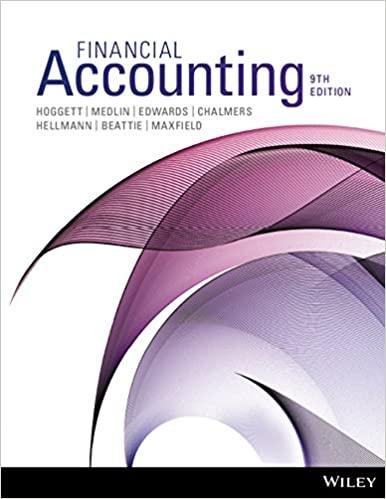Answered step by step
Verified Expert Solution
Question
1 Approved Answer
Instruction: Answer the following questions: 1 . Which of the following is not true with regards to relevant costs and relevant revenues? A ) They
Instruction: Answer the following questions: Which of the following is not true with regards to relevant costs and relevant revenues? A They are sunk costs and historical revenues B They are expected costs and expected revenues C They occur in the future D The differ among alternative courses of action Answer: Sunk costs A are relevant B are differential C have future implications D are ignored when evaluating alternatives Answer: Which of the following is an example of sunk costs? A wages to security staffs B cost of purchasing raw materials C cost of an alternative investment D wages payable to skilled laborers to make a product Answer: In evaluating different alternatives, it is useful to concentrate on A variable costs B fixed costs C total costs D relevant costs Answer: Which of the following costs always differ among future alternatives? A fixed costs B historical costs C relevant costs D variable costs Answer: A relevant revenue is revenue that is an A past revenue and differs among alternative courses of action. B future revenue and differs among alternative courses of action C inhand revenue. D earned revenue. Answer: A relevant cost is a cost that is an A future cost B past cost C sunk cost D noncash expense Answer: Quantitative factors A include financial information, but not nonfinancial information B include both financial and nonfinancial information C are always relevant when making decisions D include employee morale Answer: Onetimeonly special orders should only be accepted if A incremental revenues exceed incremental costs B differential revenues exceed variable costs C incremental revenues exceed fixed costs D total revenues exceed total costs Answer: When deciding to accept a onetimeonly special order from a wholesaler, management should A consider the sunk costs and opportunity costs B not consider the special order's impact on future prices of their products C determine whether excess capacity is available D verify past design costs for the product Answer:
Step by Step Solution
There are 3 Steps involved in it
Step: 1

Get Instant Access to Expert-Tailored Solutions
See step-by-step solutions with expert insights and AI powered tools for academic success
Step: 2

Step: 3

Ace Your Homework with AI
Get the answers you need in no time with our AI-driven, step-by-step assistance
Get Started


